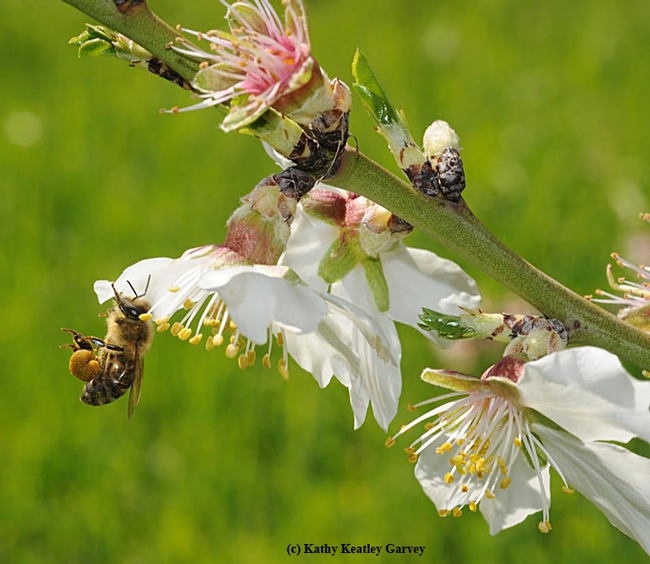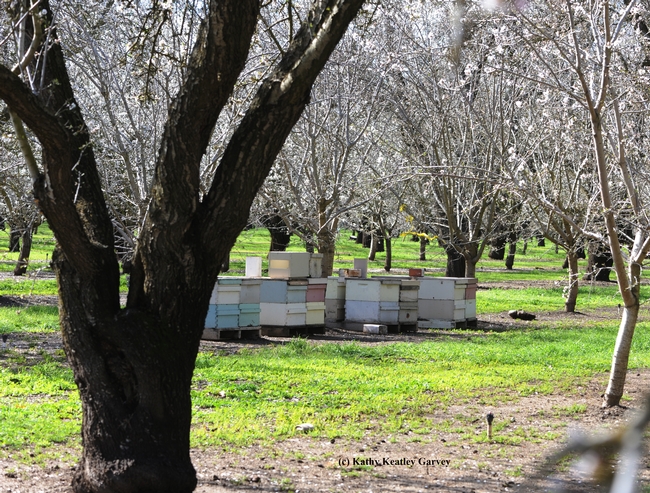Beekeepers and almond growers are concerned--and rightfully so--about the some 80,000 bee colonies that died this year in the San Joaquin Valley almond orchards. In monetary terms, that's a loss of about $180,000. But the loss isn't just financial. It could have long-term effects.
Beekeepers believe that pesticides killed their bees after the almond pollination season ended but just before they could move their bees to another site. This is a serious blow to both industries. Growers need the bees to pollinate their almonds. Now some beekeepers are vowing this is it; they'll never to return for another almond pollination season.
Extension apiculturist Eric Mussen of the UC Davis Department of Entomology and Nematology talks about the issue in his latest edition of from the uc apiaries, published today on his website.
"When should the colonies be allowed to leave the orchards?" he asks. "When pollination no longer is happening. That does not mean that the bees should remain in place until the last petal falls from the last blossom."
"Why might beekeepers desire to move their hives out of the orchards 'early?' Once the almonds no longer provide nectar and pollen for the bees, the bees find replacement sources of food. Unfortunately, those sources may be contaminated with pesticides that almond growers would never use when the bees are present. Some common pests that surge right near the end of almond bloom include Egyptian alfalfa weevil larvae and aphids in alfalfa, and grape cutworms in vineyards. Delayed dormant sprays sometimes are being applied in other deciduous fruit orchards, even when the trees are in bloom. Often blooming weeds in the crops are attracting honey bees. If the year is really dry, the bees may be attracted to sugary secretions of aphids and other sucking bugs."
Mussen says it's "not difficult to see that accidental bee poisonings often happen. Despite our California regulations requiring beekeepers to be notified of applications of bee-toxic chemicals within a mile of the apiaries, bees fly up to four miles from their hives to find food and water. That is an area of 50 square miles in which they may find clean or contaminated food sources. Thus, growers whose fields are 'nowhere near' any known apiary locations may accidentally kill many bees with chemical applications."
"It seems," Mussen says, "that a combination of exposures of colonies to truly bee-toxic insecticides, followed by delayed effects of exposure to fungicide/IGR mixes during bloom, really set the bees way behind. The problem proved so severe that a number of beekeepers stated that they were never returning to California for almond pollination. That is not a good thing, since we really don't have too many colonies coming to almonds as it is."
In his newsletter, Mussen goes into depth about when and how bees pollinate the almonds and what could be causing the problem and how it can be resolved.
His take-home message? "Our honey bees cannot continue to be exposed to as many toxic agricultural products as they are, or we will not have enough bees to fill the pollination demand for our nuts, fruits, vegetable, forage and seed crops."
That's serious business.
Attached Images:

